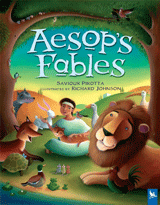The "Inbetween Place"
Here's a sneak peak direct from my sermon notes (comments welcome!):
Being a welcomer means “going to them” (or, for that matter, not even thinking about “us” and “them”). We value their questions, their journey with God, wherever they are. It's about not drawing boundary lines. When Jesus does this to the Samaritans they realise their questions are important and valued, and they their journey with God is affirmed. In other words they feel welcome.
In Deuteronomy Ch. 27, God commands half the people to stand on Ebal and pronounce curses, while the other half stands on Gerizim to pronounce blessings. Imagine it – two groups shouting opposing viewpoints, each from their own mountain. Does that sound familiar?
In John 4, Jesus goes to the “inbetween place”. He goes to the place between curses and blessings - where there is division and where people draw boundary lines, and there he calls us all to worship in spirit and truth. He goes into the valley, and takes us to a higher plane.
This is more than geography. Just as you can go to a place without really being there, you can also really “be there” without leaving this building. It’s not just about where you are physically, but where you are philosophically. Are we really meeting our community where they are at? Are we valuing their journey, meeting their needs, and trusting the Spirit to show us not just their surface questions, but their deeper longings?



















